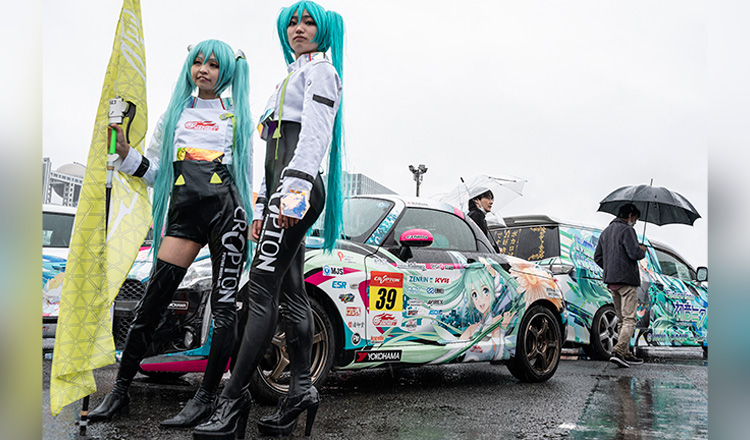[ad_1]
Sales of manga comic books are booming, both in Japan and the United States, thanks to innovative story lines that appeal across age groups, eye-catching graphics and the growing availability of titles online.
Sales of Japanese manga comics continue to soar to new highs, both at home and abroad, underlining the longevity and adaptability of a literary form that has in the past been dismissed as the preserve of children.
The potential for further growth is so significant that the Japan business federation Keidanren has called on the government to promote manga, anime, and games as the spearhead of the nation’s broader economic growth.
According to statistics released in March by the All Japan Magazine and Book Publishers’ and Editors’ Association, total sales of print, electronic comic books and magazines increased 0.2% in 2022, which is worth around 677 billion yen (€4.62 billion, $5.05 billion).
Sales of manga topped the 600 billion yen mark for the first time in 2020 thanks in large part to the popularity of the “Demon Slayer” series, although the industry believes the sector has also been boosted by people reading more while going out was restricted during the coronavirus pandemic.
Sales of print manga have remained relatively flat, accounting for around 250 billion yen in total, which is a contraction from sales of 335.7 billion yen reported in 1995. While the more traditional print format has shrunk, however, manga delivered as e-comics on smart phones or other mobile devices has risen dramatically. Sales of digital manga leapt up by 8.9% in 2022.

Dramatic 171% increase in US sales
It is a similar story in the United States, pointed out Roland Kelts, a visiting professor in the media and cultural studies department of Tokyo’s Waseda University and author of “Japanamerica: How Japanese pop culture has invaded the US.”
“I was stunned when I saw the figures for 2020 and 2021, which showed that year-on-year manga sales in the US were up by 171%,” he told DW. “That’s just an astonishing figure, and the figures made it clear that the overall graphic novel market grew much faster than the standard market for books.”
There are key differences between the Japanese and US markets, however, with sales of print manga in North America driven in recent years by anime that consumers will have seen on television, including such famous titles as “One Piece,” “Attack on Titan,” and “Spy Family,” Kelts highlighted.
The situation is reversed in Japan. Print manga which become popular are then made into anime movies.

More space to store books
According to Kelts, Japanese consumers have also been quicker to embrace online digital anime because North American homes are typically significantly larger than Japanese abodes, meaning they have more space to store print books.
Readers in Japan, on the other hand, used to treat manga as disposable and leave them on trains for other people to read. That no longer happens, as consumers now frequently read the latest instalment of their favourite manga on their mobile phones.
The aim is to as much as quadruple sales of Japanese content in overseas markets, from approximately five trillion yen at present, within 10 years.
“Fifteen years ago, Japanese business leaders sneered at the idea that manga and anime could become an important export sector for Japan, but that generation has now retired and been replaced by people who ‘get it’ when it comes to manga,” Kelts said.

Japan unchallenged world leader
Keidanren chairman Masakazu Tokura is known to be a fan of anime and manga, and discussed the film adaptation of the basketball manga “Slam Dunk” with South Korean President Yoon Suk-yeol during his recent visit to Tokyo.
“Tokura came of age during the 1970s and ‘80s, when manga were ubiquitous in Japan,” Kelts pointed out. “In fact, domestic print sales peaked in the mid-’90s, so he and his cohorts have none of the prejudices against manga that their predecessors may have held.”
“At present, Japan is the unchallenged world leader in anime and manga and Keidanren is right to get behind it as a driver of the economy.”
‘Fundamental themes’
Makoto Watanabe, a professor of media and communications at Hokkaido University in Sapporo, is currently re-reading the “Full Metal Alchemist” series of manga, which he first devoured as a boy.
“It’s quite a strange story, but when you interpret the characters’ actions, it’s all about friendship, love and telling the truth, which are all very fundamental themes and will resonate no matter the reader’s age,” Watanabe said.
“I think that is often what makes manga so appealing and timeless; you can read them as a child and enjoy the story but go back again much later and find a new story within them.”
“There are, of course, some negatives, such as excessive violence in some manga, but on the whole I believe strong storylines and images that appeal to everyone from school kids to salarymen, help to communicate many of the essential elements in life, and they are a valuable resource,” he said.
For Watanabe, Manga remain a valuable learning tool on the way to adulthood. DW
[ad_2]
Source link

